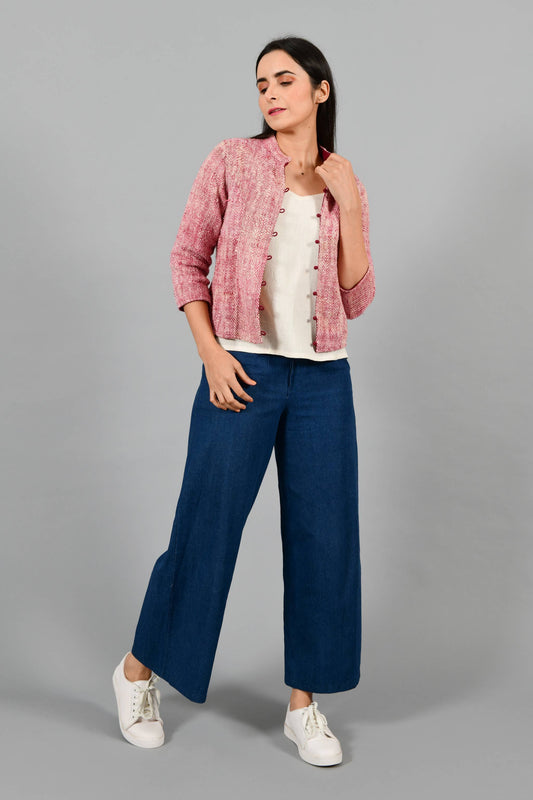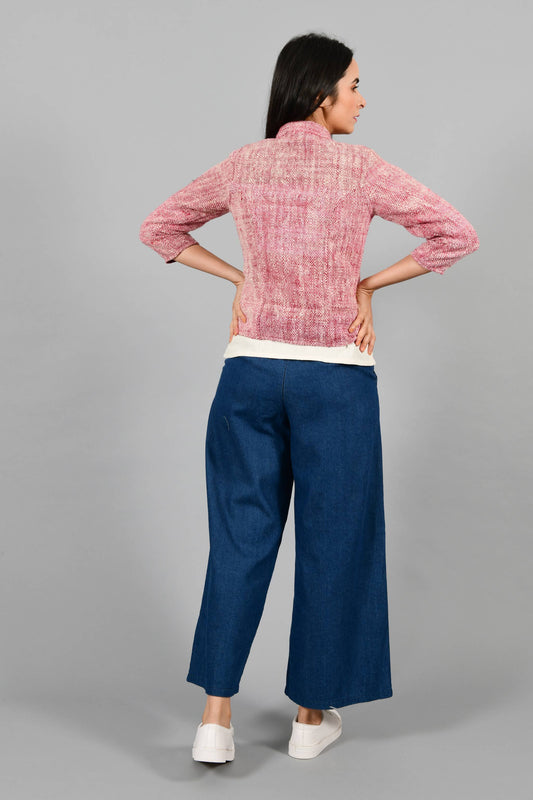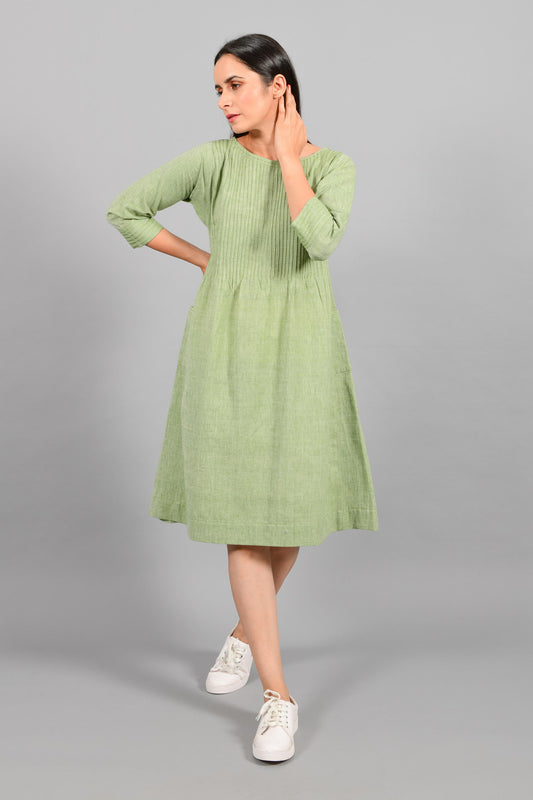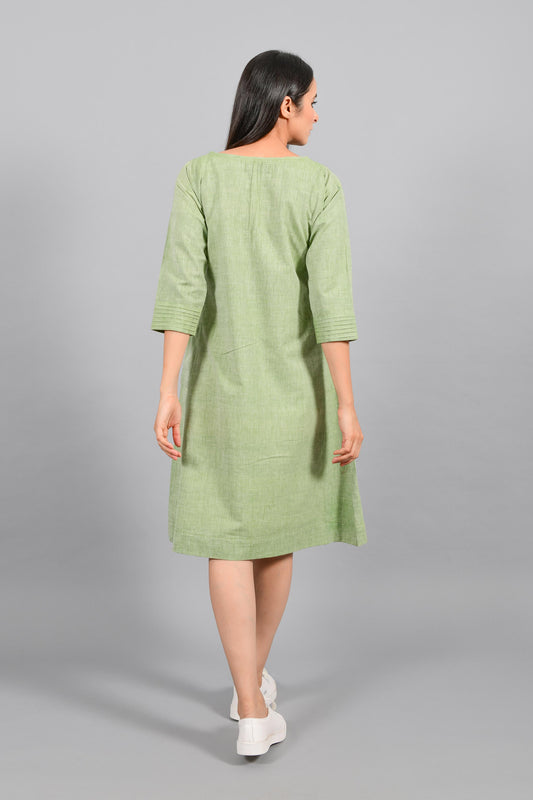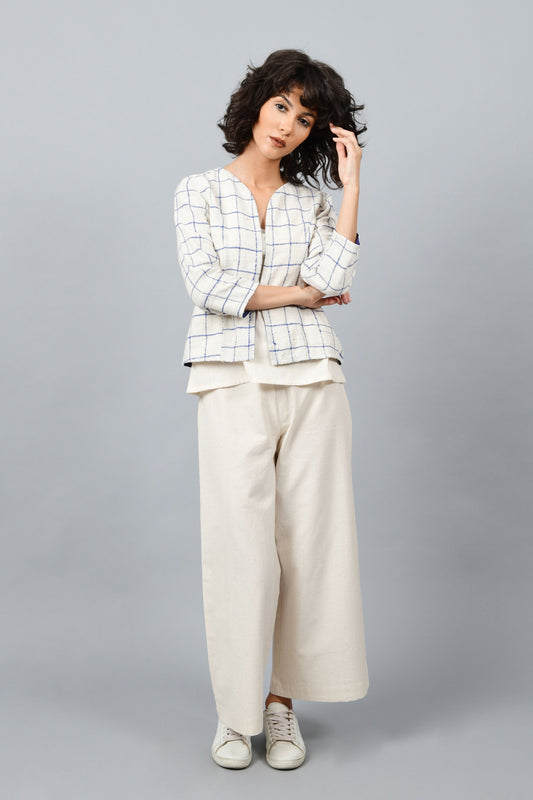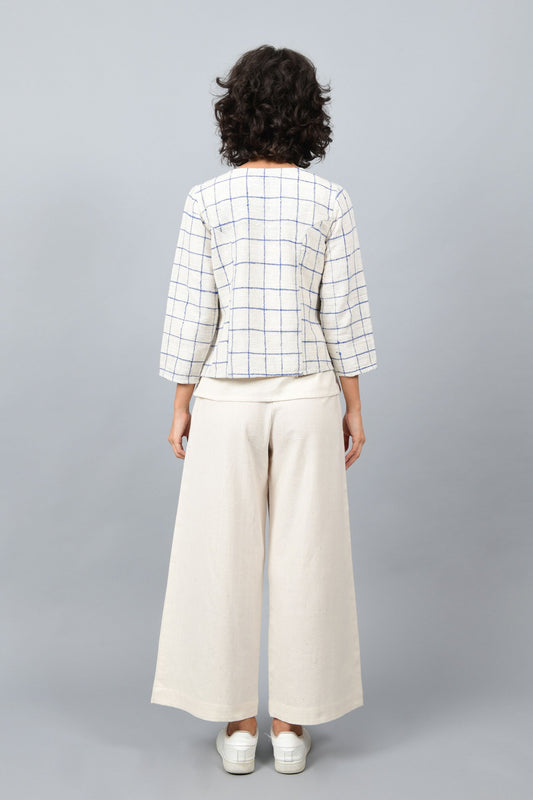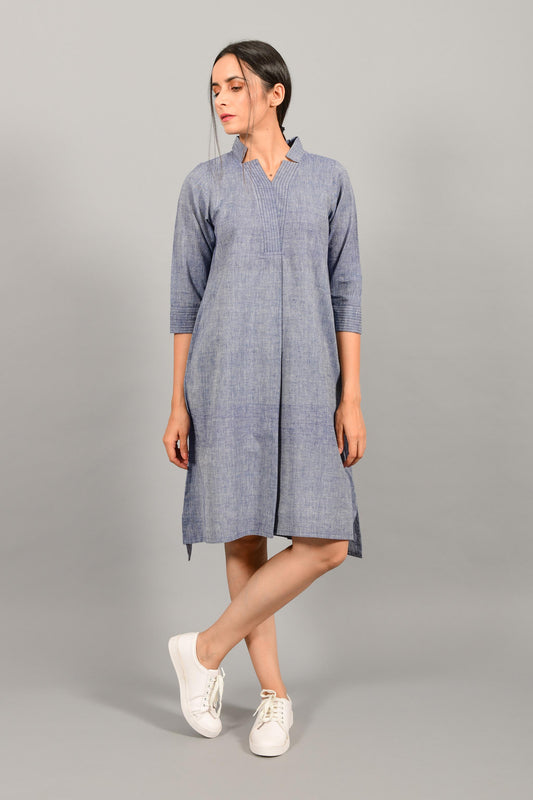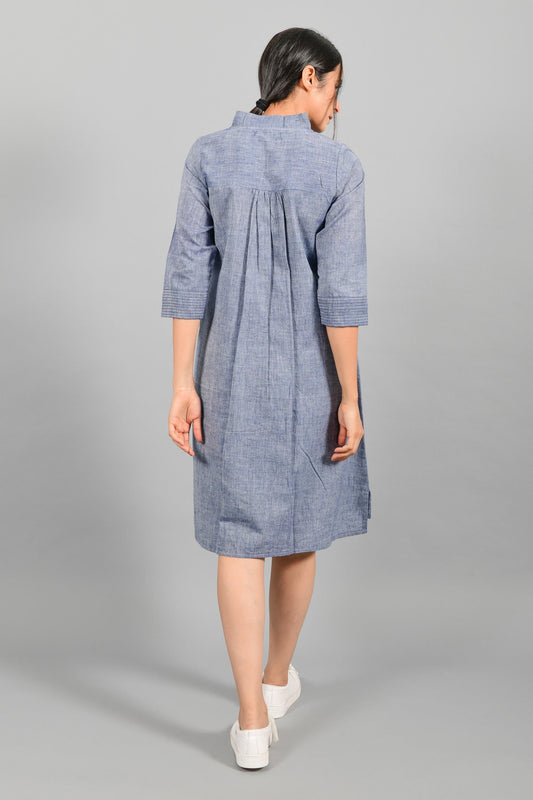Hand reeled Indigenous Silk
Bareta, a small village in Bihar has paltry population of 10,500 people. The landscape that spreads over 410 hectares has some 2000 houses & abundant farmlands. It is on one of these farms that has the mulberry tree necessary for silkworm rearing.

Traditionally, sericulture is an extremely labourous activity as it takes an year for the mulberry sapling to give yield apt for silk worm rearing. Once the eggs hatch and are well fed on the organic mulberry leaves, caterpillars are transferred to a bamboo frame where they make cocoons. Industrially, this process is done in a closed environment with moderated temperature & light but not in Bareta. The people here employ indigenous & larva friendly frames called ‘Chandrika’. Chandrika, as the name suggests, is a frame that has concentric circular rings that allow free movement of the caterpillar. The frame is created in such a manner that it allows the air to flow through. The frame is then kept in shade where it has access to direct sunlight. The caterpillars after enough movement across the frame settle down to spin the cocoon. This process takes 45 days approximately. Once the cocoons are ready, they are hand-plucked from the frame to obtain the silk filament. The silk filament is then hand-reeled into hanks for use on hand-looms. It takes 15 days to produce 1 kg of silk yarn through traditional hand-operated tools. The hand-spun or more aptly, the hand-reeled yarn is then woven by women using pit-looms.
While the process is indigenous & the plantation is organic, the question still remains if the silk is peace silk or not?
The people of Bareta use Bombyx Mori, a domesticated silk-moth that has a very short life span. This variety of silk moth live up to 5-10 days after emerging from the cocoon and the essential organs like mouth & proboscis required to feed or suck the nectar is also missing! The people of Bareta leave the cocoons on the frame for 45 days in open to let the moths break the cocoons before they proceed to boiling them.
It takes approximately 1700-2000 cocoons to make fabric enough for one silk dress.
The fabric for our collection came from ‘Farm to Fabric’ project which is the brainchild of Mulberry One.
Check the Collection here - Handmade Love
Old World Cotton
BT Cotton was introduced to India as a pest resilient alternative to the indigenous variety that was being growing here since the Indus Valley Civilization. The promise was that BT cotton would fetch higher prices since it was long staple fiber & would help farmers earn more because of its higher yield. But as the time passed by, BT Cotton became one of the main reasons for the farmers to commit suicide.
With crops ravaged by pests and with the yield declining despite increasing the quantity of fertilizers, pesticides & insecticides, the farmers have been bearing the brunt of BT Cotton for long time now and as the cycle of experimenting comes to a close, the Old World Cotton has risen again.

Old World Cotton or Kala Cotton as it is popularly known is an indigenous strain of rain-fed ‘old world’, Gossypium herbaceum that was eradicated from use during the colonial rule due its ‘inferior’ short staple length as compared to the ‘superior’ long staple length of its American-counterparts. Famous for its longevity in draught ridden areas and sturdiness against pests, the Desi Cotton/Indigenous Cotton/Kala Cotton uses only rain water for growth and does not require and insecticides or pesticides. The resultant fiber is not just organic, but truly sustainable too!
Khamir has been a pioneer in creating an integrated farm to fabric value chain between the farmers, ginners, spinners and the weavers. Of one of the many beautiful fabrics created in this value, chain is the naturally dyed denim.
Made from the indigenous rain-fed cotton, hand-spun on a charkha, woven on a handloom & dyed in natural indigo and siyahi, the fabric has extremely low carbon-footprint and is truly a sustainable responsible fabric to work with.
In our Journey, we keep looking for such stories to share with you and while we discover them we also create products that carry these stories forward with the consumers. One such story is of our new collection "Handmade Love", a tiny exclusive womenswear collection made out of the hand reeled silk of Bihar and Kala Cotton from Gujarat. Keep the clocks on and fall in love with it this Valentine's Day morning.
Do make sure to checkout our Silk Shirts here.
Image Credits- Images rights belong to respective owners and the institutions from whom the images have been sourced.

